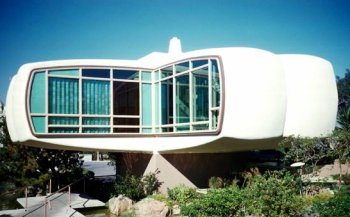I don’t think Rodney (Nashville Hall of Fame songwriter that he is) means this literally. Well maybe the gasoline part.
Month: January 2009
Online botanical illustration course
[Full disclosure: I work in Cornelly University’s Department of Horticulture.]
If one of your new year’s resolutions is to become more creative and perhaps unleash that artist hidden within, consider:
Introduction to Botanical Illustration
Course starts Jan. 19.
If you’ve ever wanted to become proficient at illustrating what you see in your garden, this 6-week online course will teach you the basics of rendering plants in pencil and ink.
The instructor, my friend and co-worker Marcia Eames Sheavly, is an accomplished artist who also teaches our popular Art of Horticulture course, recently featured by Julie over at The Human Flower Project.
More info about the course. | View the full syllabus.
There’s also an online organic gardening course that starts tomorrow, Jan. 5. You can still register if you hurry.
Rethinking bulbs – Jacqueline van der Kloet
I’ll admit that my relationship with flower bulbs has been a bit rocky. Part of it is that I live on an extremely wet piece of land with heavy clay soil, and most of the common flower bulbs aren’t well adapted to those conditions. To grow bulbs here at Ellis Hollow that are native to the Mediterranean or Central Asia requires considerable site modifications.
More and more, I’m focusing on species that can tolerate (or even thrive) with wet feet — Leucojum, Camassia and the like. But I think I’ve finally put my finger on the problem:
Conventional wisdom says plant bulbs in tight drifts to maximize impact at that time of year when you really yearn for color. So I get plantings that look like this:
Not bad. (Especially considering that I rescued these tulips from spent forcing pots.) But not very satisfying either. And definitely not my style.
My style is on the wild side. If you’ve visited here regularly, you know that my biggest design influence is Piet Oudolf — the Dutch designer famous for his naturalistic designs and focus on plant and flower form more than color. So imagine my excitement upon discovering this past year that he teamed up with Dutch bulb desitgner Jacqueline van der Kloet in his Battery Park (New York City) and Millennium Park (Chicago) installations.
I first read about van der Kloet in this Chicago Tribune story by Beth Betts, and despite all I’ve read since, I think Beth sums up best what’s unique about van der Kloet’s approach:
A troop of red tulips standing tall beside a regiment of yellow daffodils. A march of blue grape hyacinths. A platoon of hyacinths in a pot.
That’s how gardeners traditionally plant spring bulbs: in solid masses of a single type …
But there is another way. Spring bulbs can relax, mix and mingle, dancing with the emerging green of perennials, in an ongoing rhythm that moves smoothly from early spring into summer. … Instead of a regiment, they can be a sprinkle and a sparkle, more like a patch of intermingled wildflowers that appears in a meadow or a woods after a long winter.
That sounds more like what I should be shooting for.
Betts quotes van der Kloet:
“I think bulbs have more qualities than only color. … They also can make a nice contrast to the growing leaves of perennials.” She mixes bulbs with varying colors, shapes and bloom times and scatters them in casual clusters. The aim, she says, is to treat the bulbs and other plants “as if they are players in the same play, not first the bulbs and the perennials later.“
In practice, this means planting mixes of bulbs over wider areas (not the small platoons I have scattered here and there now) and strive for random spacing. Striving for randomness is kind of an oxymoron, I think. I mean I’ve been planting bulbs randomly in drifts for years. I just can’t figure out how come they all end up spaced 4 to 6 inches apart. ;-7
As I start putting this new bulb attitude into practice, what will it look like? I’m not sure. If I relied on tulips (deer and squirrels limit my use), it might look more like this than the image above. Or like this.
You can see more images of van der Kloet’s designs at her website (links to English version).
The future ain’t what it used to be
 Some light Sunday reading from The Atlantic as we prepare to go out into the world and tackle 2009: Future Schlock, from the always irreverent P.J. O’Rourke. (I seldom agree with his politics. But he’s always entertaining.)
Some light Sunday reading from The Atlantic as we prepare to go out into the world and tackle 2009: Future Schlock, from the always irreverent P.J. O’Rourke. (I seldom agree with his politics. But he’s always entertaining.)
Wherein O’Rourke and family visit Disney’s The Innoventions Dream Home (that’s the 1957 version at right) and discover the future ain’t what it used to be.
Bruce Handy, writing in Time … went on, “It’s not a novel observation to point out that our culture has become increasingly backward looking.â€
Well, given the future envisioned in Disney’s House of the Future, who can blame us for looking the other way?
Disney’s Tomorrowland is deeply, thoroughly, almost furiously unimaginative. This isn’t the fault of the “Disney cultureâ€; it is the fault of our culture. We seem to have entered a deeply unimaginative era.
But please. Don’t let it harsh your new year’s buzz.


